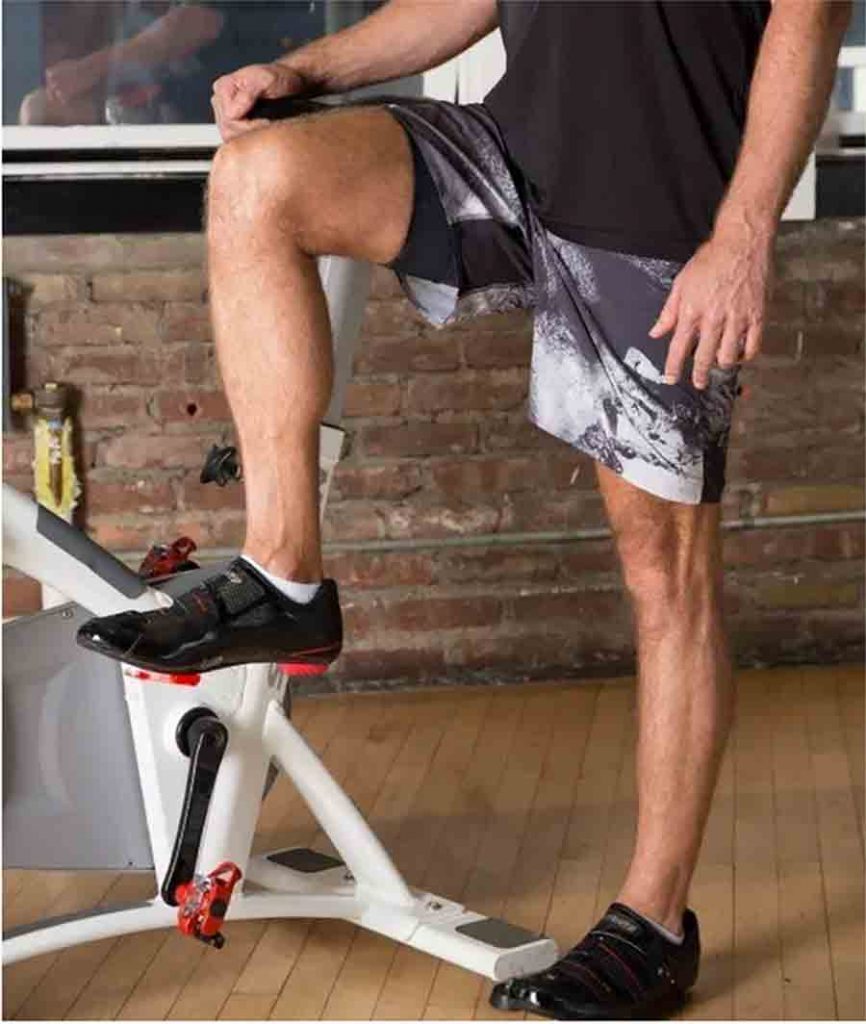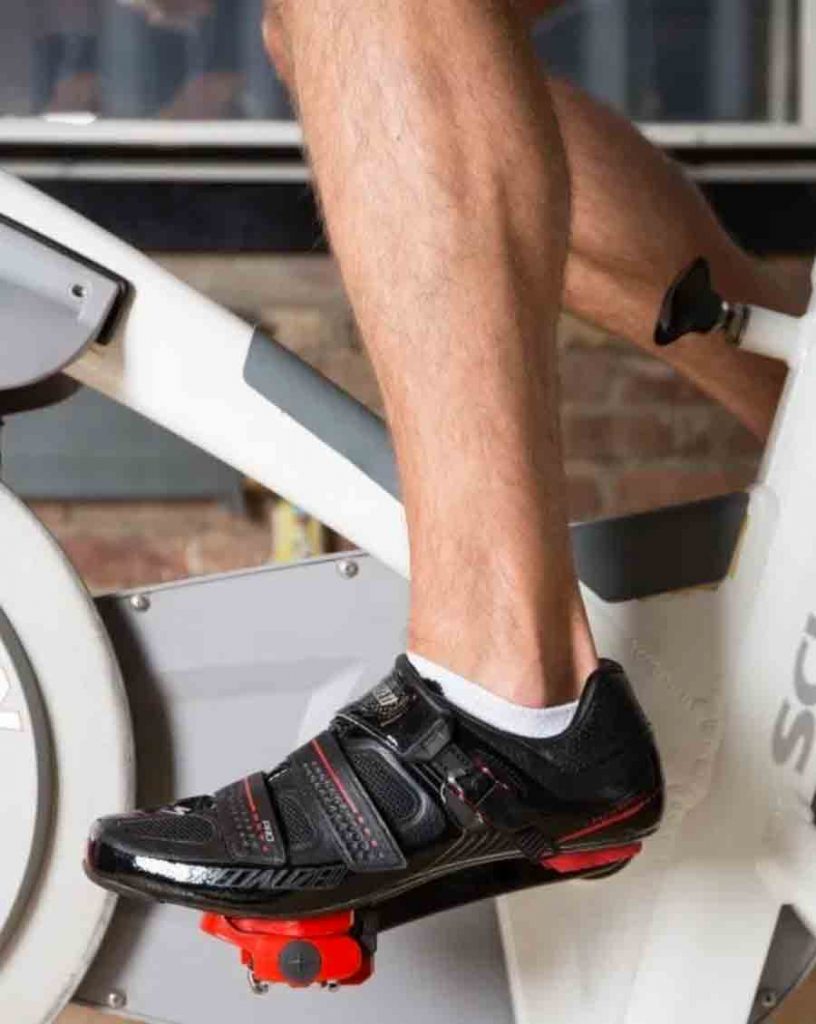We’ve all been there: You step into your first indoor cycling class, and you’re instantly intimidated. Dim lights, loud music, and a whole slew of pedaling people who all seem to know exactly what to do. Even though you should never be scared to ask a question (and hey, the instructor should break the ice and ask if anyone is new first!), we get that it can feel a little overwhelming.
With that in mind, we tapped cycling instructor and Equinox trainer Wil Ashley to show us exactly how to set up an indoor bike. First pro tip: Don’t rush into your class 60 seconds before it starts. Get there a few minutes early and follow this guide:
1. The saddle height should be even with your hip.

Raise your leg so knee forms a 90-degree angle from hip. Adjust your saddle (or seat) to be level with thigh. “It’s a visual point of reference to use as your base,” Ashley says. (You’ll fine-tune it in the next step.)
2. When seated, your knee should have a slight bend.

Get on the bike and allow leg to fully extend, so pedal is at the bottom of its rotation. Your leg should be neutral, not locked, with a slight bend at the knee, Ashley says. If you’re unsure what this feels like, Ashley suggests standing and shifting all your weight to one leg (think a slight hip pop to the side). Your other leg will naturally bend—that’s the same small bend you want on the bike.
3. Your elbows should have a slight bend.

“This is really dependent on how comfortable you are,” Ashley says. For most, the handlebars should be far enough away that your shoulders can relax and you have a small bend at your elbows. Slide the saddle forward or backward to adjust. The height of the handlebars depends on how flexible your hips are, so raise or lower them according to where you feel comfortable in and out of the saddle.If you have back problems or are pregnant, start with the handlebars closer to your seat, which will force you to sit upright and prevent pressure on your back.
4. Use the cage to your advantage.

If you’re wearing sneakers instead of cycling shoes, push your foot as far forward in the cage as possible and tighten the strap, Ashley says. Sneaker-wearers may feel numbness in their feet midway through class, which is likely because you’re bending your foot each time you pedal and cutting off some circulation. Shoes with stiffer soles (think trail shoes instead of flexible, cushioned running shoes) will help prevent that.
5. Or invest in a pair of cycling shoes.

Cycling shoes with cleats will clip into the pedal and relieve pressure from the top of your foot. They also allow you to utilize your upstroke, rather than just pushing down on the pedals. (It really makes a difference, trust us!)
6. Ride like a pro.

Your Action Plan
Whether you’re a newbie or simply brushing up on the etiquette, here are some tips for a successful joyride:
- Suit up. The body will definitely work up a sweat, so throw on moisture-wicking clothes to keep cool and dry. As for the feet, cycling shoes are required for some classes, but normal athletic kicks will work fine in most cases.
- Take a seat. If it’s an option, reserve a bike online to guarantee a spot in the class. Otherwise, get there early to snag a seat. And newbs, don’t head straight to the back—getting a bike up front will make it easier to follow along.
- Adjust your saddle. Getting the perfect fit on the bike can be tricky, but a general rule of thumb is to adjust the seat to be even with your hip. As for the handlebars, position them so the neck and back doesn’t strain. And strap or clip in the feet: The balls of the feet should rest on the center of the pedal and if you’re strapping in, make sure they’re secure.
- Know the numbers. Some instructors call out numbers to indicate how far you should be rising out of your seat. Roughly, position one is sitting in the seat, position two is a slight hover over the saddle, and position three is a more dramatic hinge forward, but here are the specifics on each.
- Insist on resistance. There are no real gears to change, but there will be a resistance knob or computer. This will control how hard the muscles need to work to increase RPM (that’s bike talk for revolutions per minute).
- Towel off. Keep a towel draped over the handlebars for easy access—you’ll probably need it. And swigging water is encouraged mid-ride to stay hydrated (although the cycle ‘n’ sip definitely takes some coordination).
- Choose your class wisely. Love the club? Go for sessions with dimmed lights or a disco atmosphere. If seeking more adventure, opt for classes that bring the outdoors to the studio. Getting the mood juuust right (for you) can make your session more fun and more effective.Trusted Source
Indoor cycling puts things in full gear with its awesome tunes, control over resistance and speed, and overall intensity. Hop on to the nearest bike and give this class a go!

Special thanks to Wil Ashley, cycling instructor at Equinox, who modeled for us. Ashley wears an Equinox shirt and Lululemon shorts. Shot on location at Equinox Flatiron in New York City.



